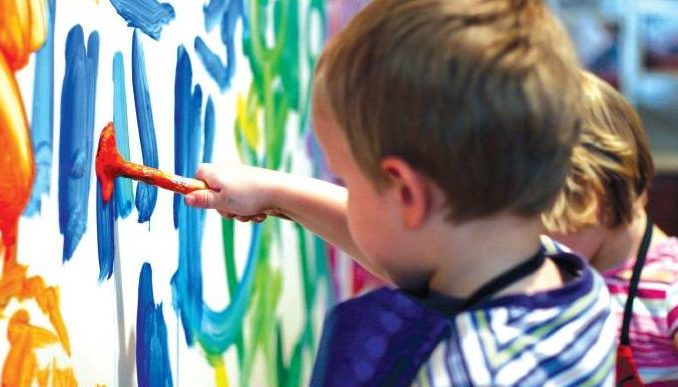After speaking with a dear friend, who is a former art teacher, I was amazed at the educational benefits of copying the artistic masters from history. Can you imagine being taught be de Vinci, Vermeer, Cassatt, or Rembrandt? Imagine sitting in their studios with a table of supplies and a master to follow. Oh, the lessons would be wonderful! These masters from art history can still teach us today.
As homeschoolers—and all learners alike—we can learn from the historic masters and improve our own skills in the process. Much like the classical approach to writing (learn the separate mechanics of handwriting, spelling of words, structure of sentences and connecting words to make a meaningful thought) is to copy examples of beautifully written sentences before writing original creations, copying the masters allows us to learn the techniques, applying particular layers in the right order, how colors work together and all other aspects of painting before attempting to craft something entirely original.
Copying the historical originals also gives an easy springboard from which discussions can begin.
- Who was the artist?
- In what time period did he or she live?
- What is the subject of the painting?
- Is there a significant meaning behind the subject or the other objects in the painting?
- How did the artist express emotion in the piece?
- A good discussion topic is always great to stumble up while learning.
My artist friend offered a few suggestions when using masterpieces for reproduction learning purposes.
- Find the best quality image to use as a reference. Often libraries have wonderful, large books with good images. Start there.
- Avoid copying a piece from a computer screen, as the colors and textures are even harder to observe than on a page in a book.
- Use a canvas of similar size to the original, if possible. This helps with proportions.
- Select just the main part of the original piece to copy. Try to ignore all of the details in the background. Focus on the main subject, or even just a part of the main subject.
If Michelangelo was here with us today and offered a lesson, I am sure each of us would jump at the opportunity. Let’s take the opportunity to learn from the wonderful works he and the other pro artists left us by giving detailed attention to their pieces of beauty.
When we recreate something that a master made, we are forced to pay attention to detail in a way that we usually gloss over with a cursory glance. Have you added reproducing art into your homeschool? How did it turn out?
Looking for online art courses? United Digital Learning offers Drawing, Painting, Digital Arts, Photography, and Art in World Cultures, to name a few!
Check out our art classes today!
Lindsay Banton is a caffeinated mother to three great kids. She never expected to homeschool, but has found that it is a wonderful addition to their lifestyle and wouldn’t change it for the world. In addition to homeschooling, Lindsay works alongside her husband in campus ministry at a large university in Connecticut. She grew up in Virginia but has settled into life in New England, learning to love the long winters, cool springs, green summers and gorgeous autumns- and has built a boot collection to meet all the demands. She is currently blogging at www.oaksreplanted.blogspot.com.

